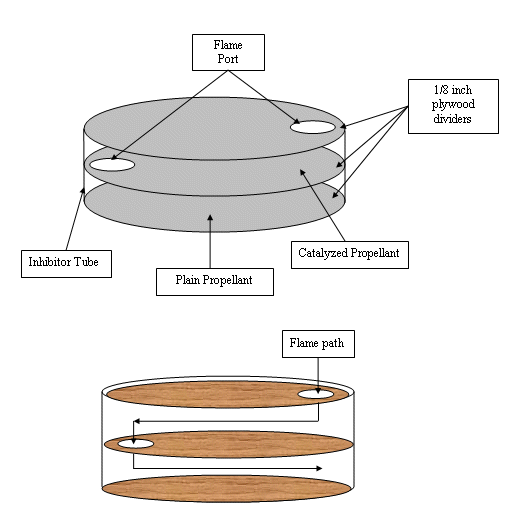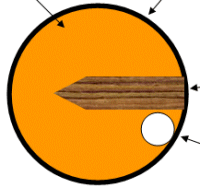
|
Note that the illustration is "upside down."
Meaning that the propellant grains and nozzle will be to the top
of the illustration, the head-end closure will be to the bottom.
I drew it this way because this represents the view while assembling
the grain.
A short section of inhibitor tube is cut, in this case one inch in
depth.
A solid plywood disk is epoxied into the bottom end.
Topside of the solid disk is coated with epoxy, as well as the inside
of the inhibitor tube. 5-minute epoxy works fine, as long as I
work quickly.
A blob of warm, uncatalyzed rcandy is pressed into the tube, enough to
almost half-fill it.
The first perforated disk is pressed firmly onto the propellant.
It had been coated with epoxy first. Enough pressure is
applied to remove any bubbles around the edges, and to extrude
propellant slightly through the
perforation.
The process is repeated with another layer of rcandy, this time
catalyzed with a little red iron oxide. I find that catalyzed
propellant does not extinguish easily when the case pressure drops,
uncatalyzed propellant sometimes goes out.
As before, all surfaces are coated with epoxy, to fill any air gaps and
to ensure that the propellant sticks to the surfaces well. |

